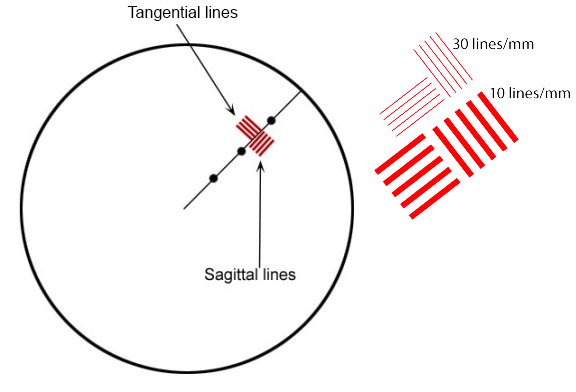Just MTF Charts
Just the Cinema Lens MTF Charts: Canon and Sigma
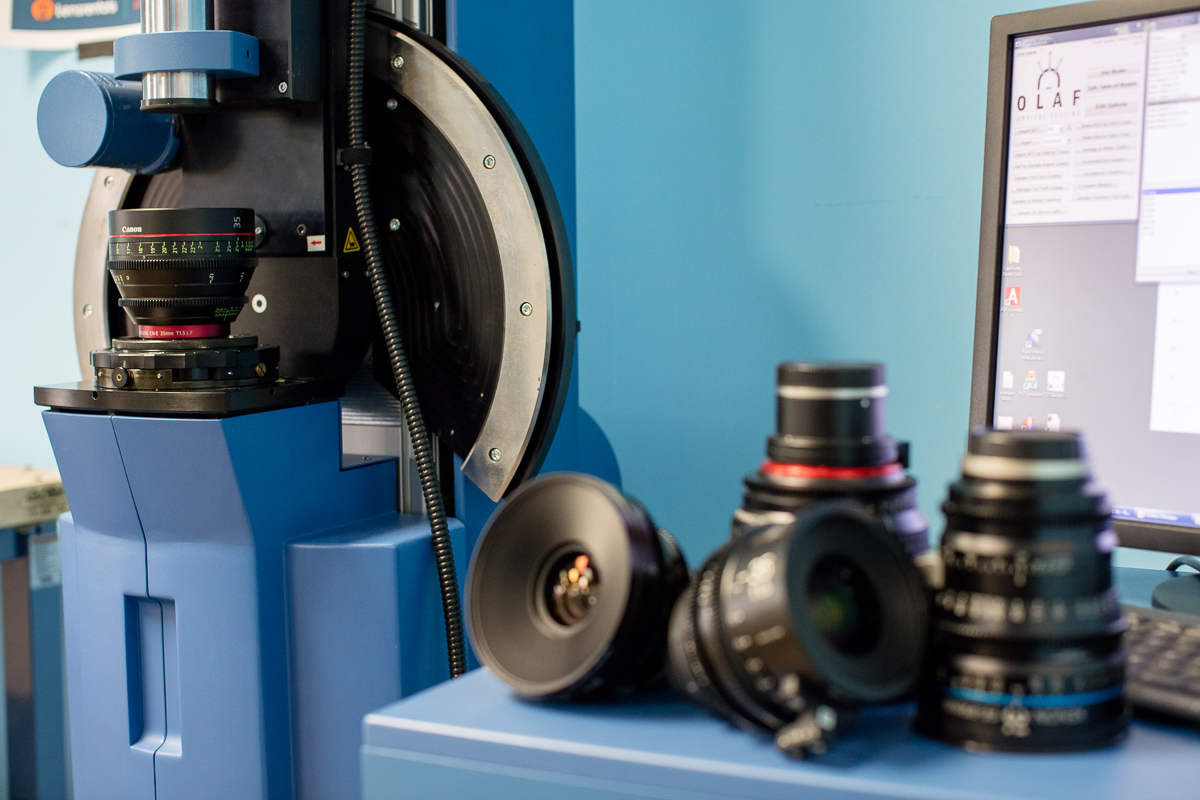
We’re going to continue the Cinema prime MTFs with the Canon and Sigma lenses. Again, we’re not going in any particular order, other than what we have handy and what fits reasonably into a single post.
Since these are among our most popular cinema lenses, we do generally have at least a 10-copy set for each. The graph will tell you how many copies were tested for each lens.
A Quick How to on Reading MTF ChartsIf you’re new here, you’ll see we have a scientific methodology to our approach, and use MTF charts to measure lens resolution and sharpness. All of our MTF charts test ten of the same lenses, and then we average out the results. MTF (or (or Modulation Transfer Function) Charts measure the optical potential of a lens by plotting the contrast and resolution of the lens from the center to the outer corners of the frame. An MTF chart has two axis, the y-axis (vertical) and the x-axis (horizontal). The y-axis (vertical) measures how accurately the lens reproduces the object (sharpness), where 1.0 would be the theoretical “perfect lens”. The x-axis (horizontal) measures the distance from the center of a lens to the edges (measured in millimeters where 0mm represents the center, and 20mm represents the corner point). Generally, a lens has the greatest theoretical sharpness in the center, with the sharpness being reduced in the corners. Tangential & Sagittal LinesThe graph then plots two sets of five different ranges. These sets are broken down into Tangential lines (solid lines on our graphs) and Sagittal (dotted lines on our graphs). Sagittal lines are a pattern where the lines are oriented parallel to a line through the center of the image. Tangential (or Meridonial) lines are tested where the lines are aligned perpendicular to a line through the center of the image. From there, the Sagittal and Tangential tests are done in 5 sets, started at 10 lines per millimeter (lp/mm), all the way up to 50 lines per millimeter (lp/mm). To put this in layman’s terms, the higher lp/mm measure how well the lens resolves fine detail. So, higher MTF is better than lower, and less separation of the sagittal and tangential lines are better than a lot of separation. Please keep in mind this is a simple introduction to MTF charts, for a more scientific explanation, feel free to read this article. |
Canon CN-E
One thing I want to mention is the Canon CN-E MTFs for several lenses are different than the photo lens MTFs. This is not an error or a weird coincidence, it’s because they are not the same lens optically.
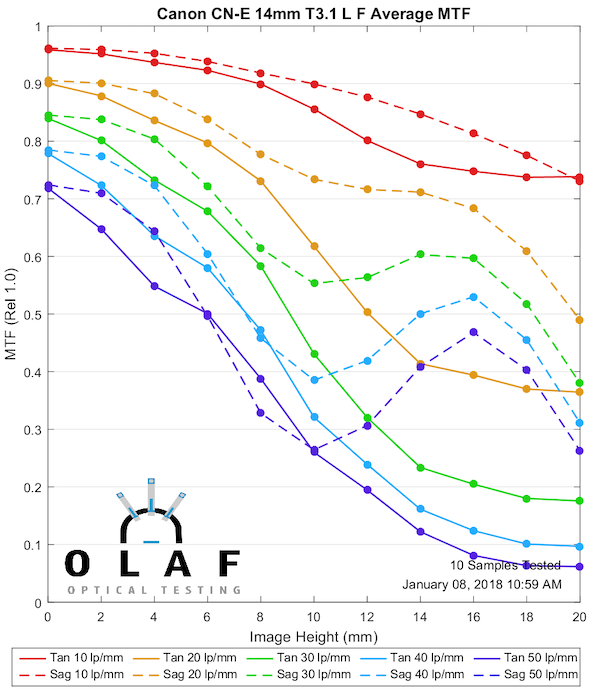
Lensrentals.com, 2019
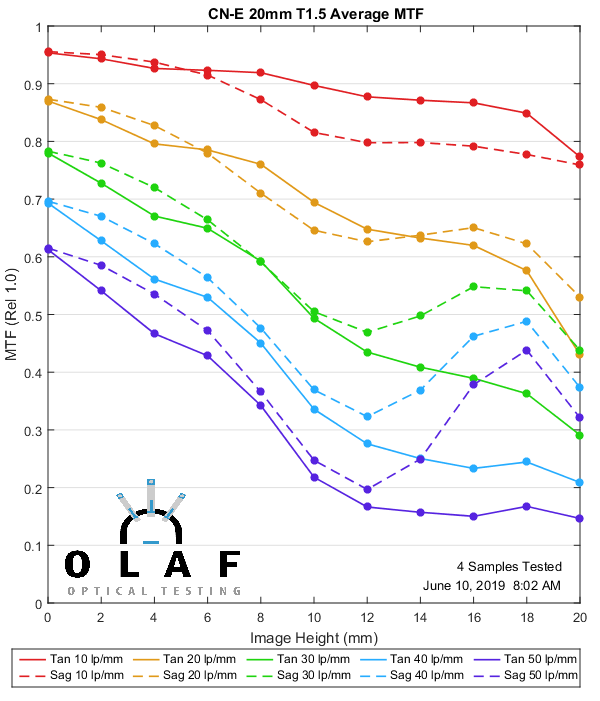
Lensrentals.com, 2019
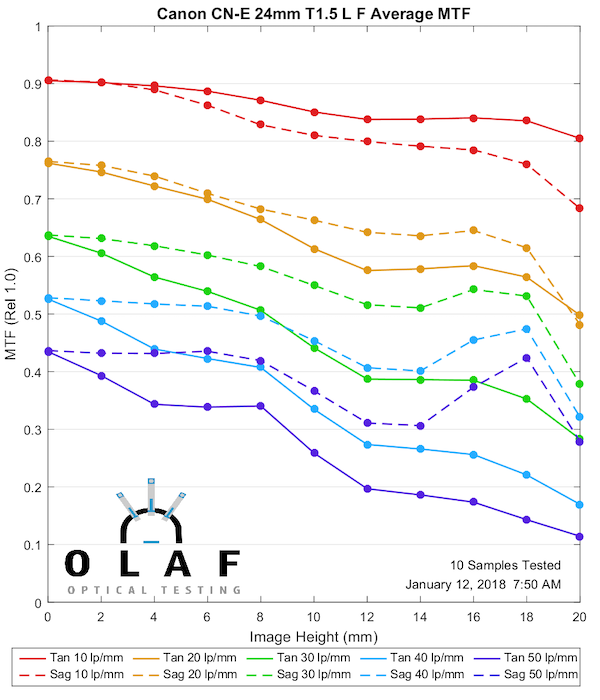
Lensrentals.com, 2019

Lensrentals.com, 2019

Lensrentals.com, 2019
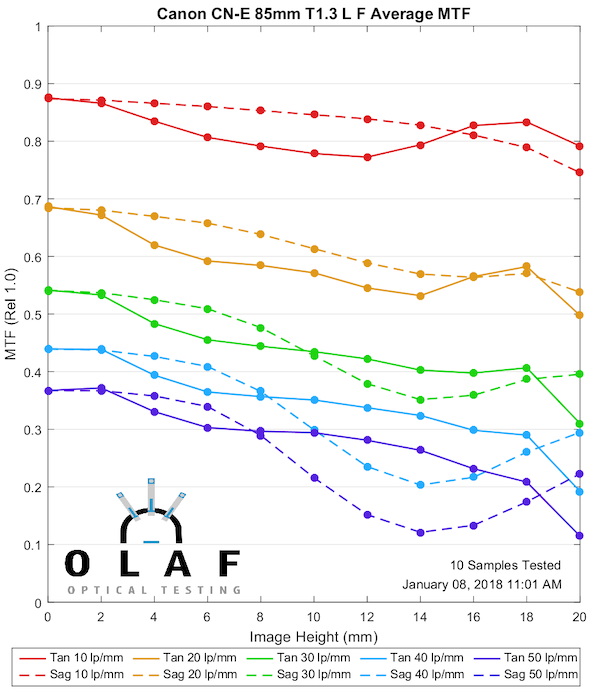
Lensrentals.com, 2019
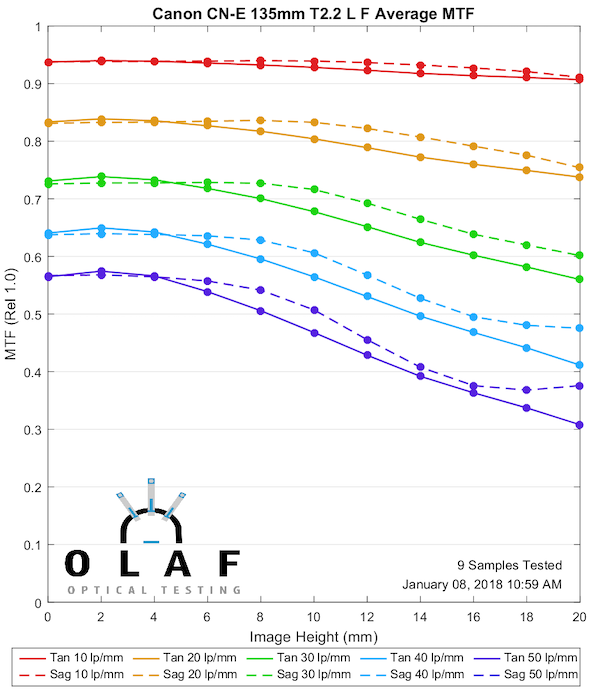
Lensrentals.com, 2019
Sigma Cine FF
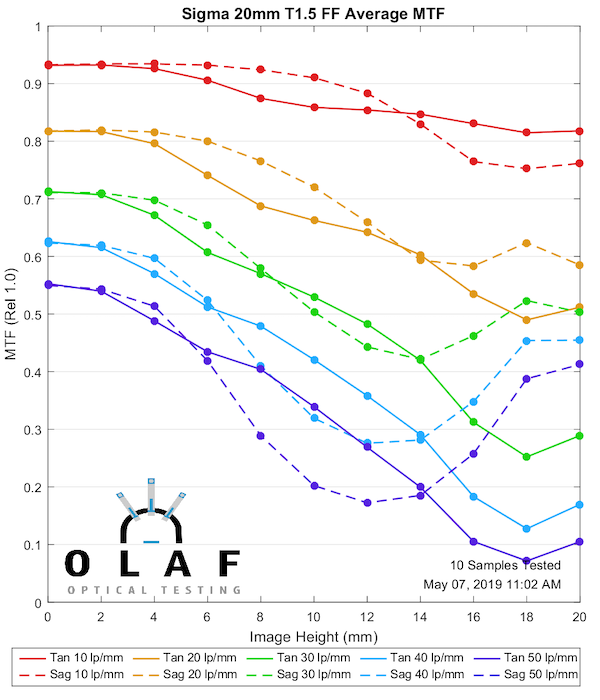
Lensrentals.com, 2019
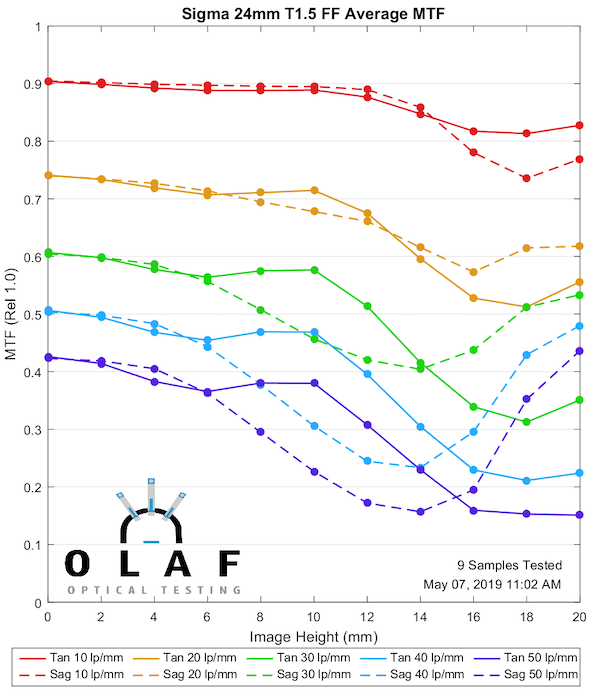
Lensrentals.com, 2019
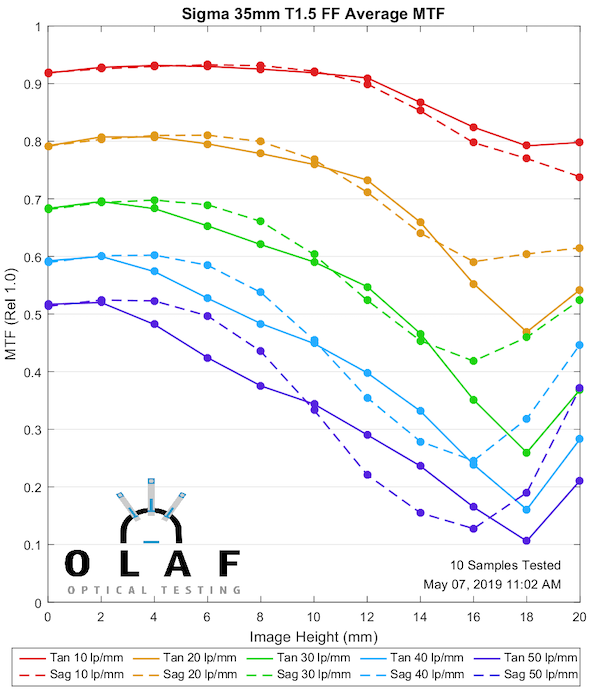
Lensrentals.com, 2019
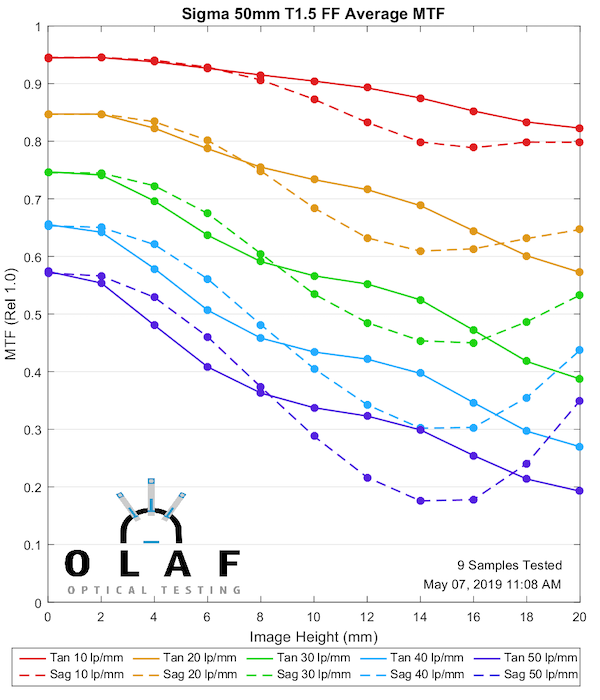
Lensrentals.com, 2019
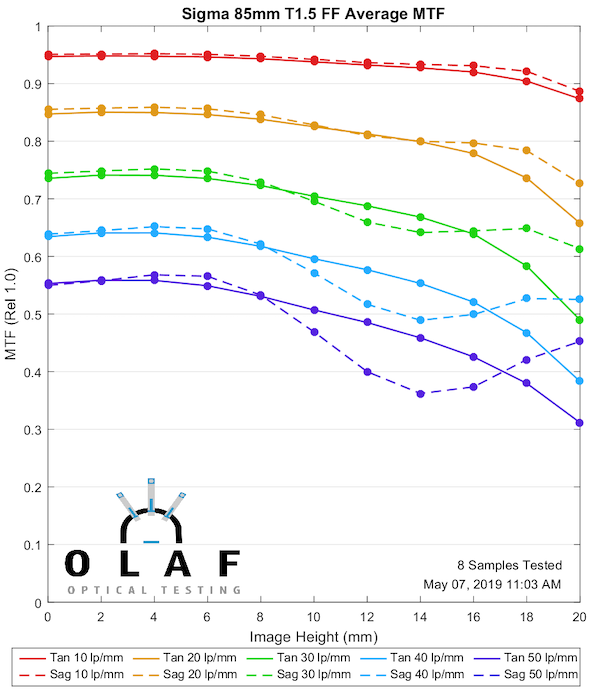
Lensrentals.com, 2019
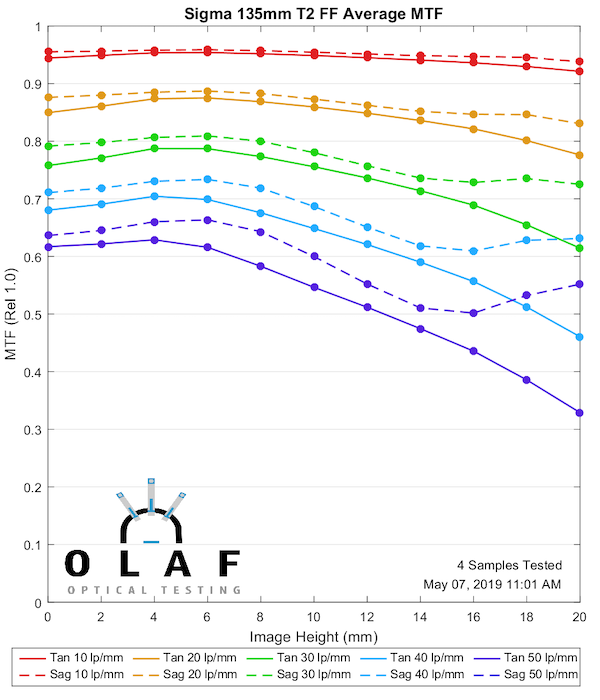
Lensrentals.com, 2019
Roger Cicala, Aaron Closz and Brandon Dube
Lenrentals.com
May 2019
Author: Roger Cicala
I’m Roger and I am the founder of Lensrentals.com. Hailed as one of the optic nerds here, I enjoy shooting collimated light through 30X microscope objectives in my spare time. When I do take real pictures I like using something different: a Medium format, or Pentax K1, or a Sony RX1R.
-
Alex Naanou
-
Stanislaw Zolczynski
-
Andreas Werle
-
Max Manzan
